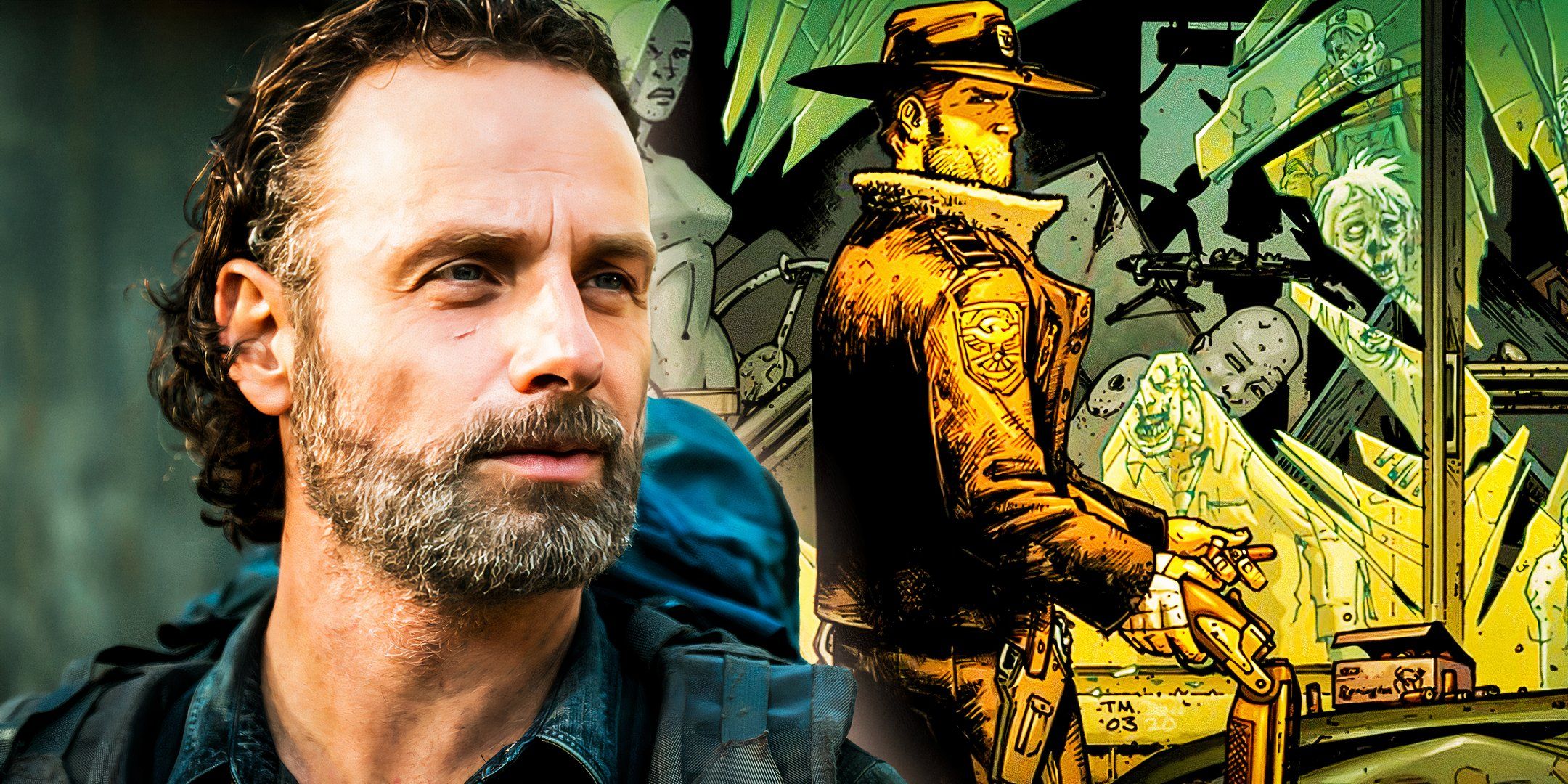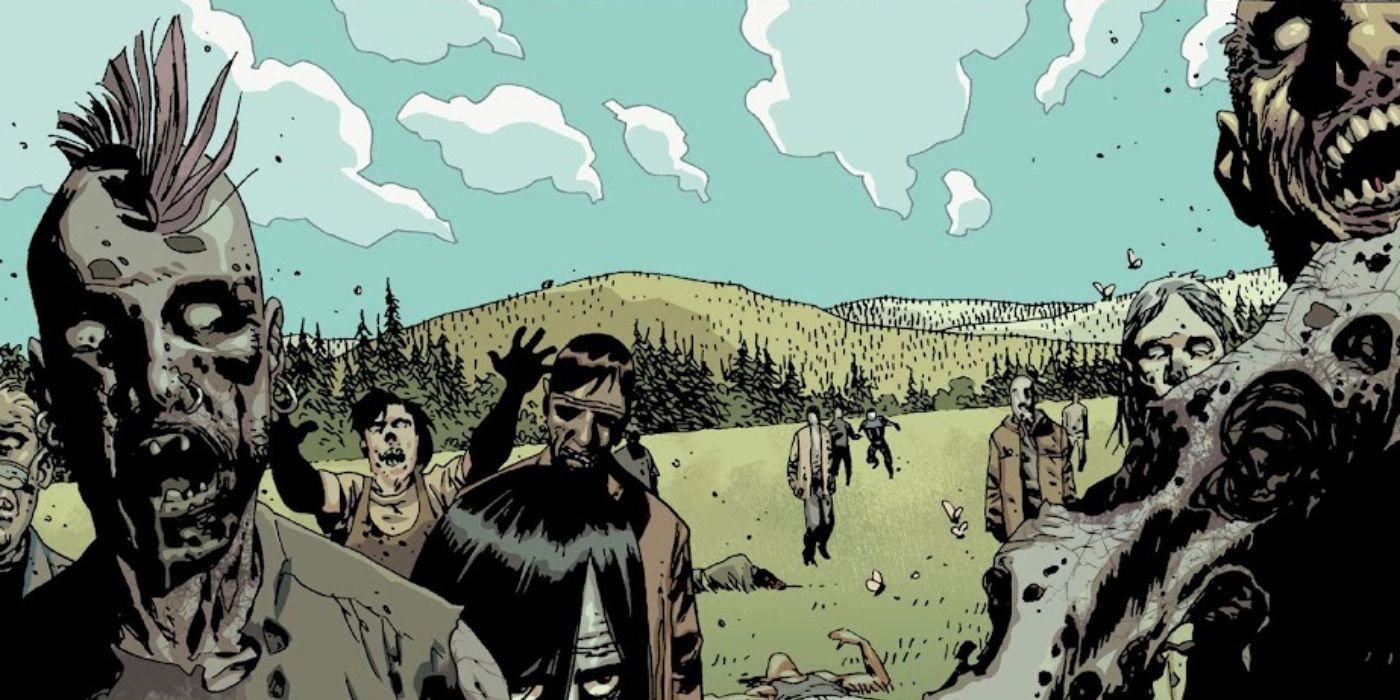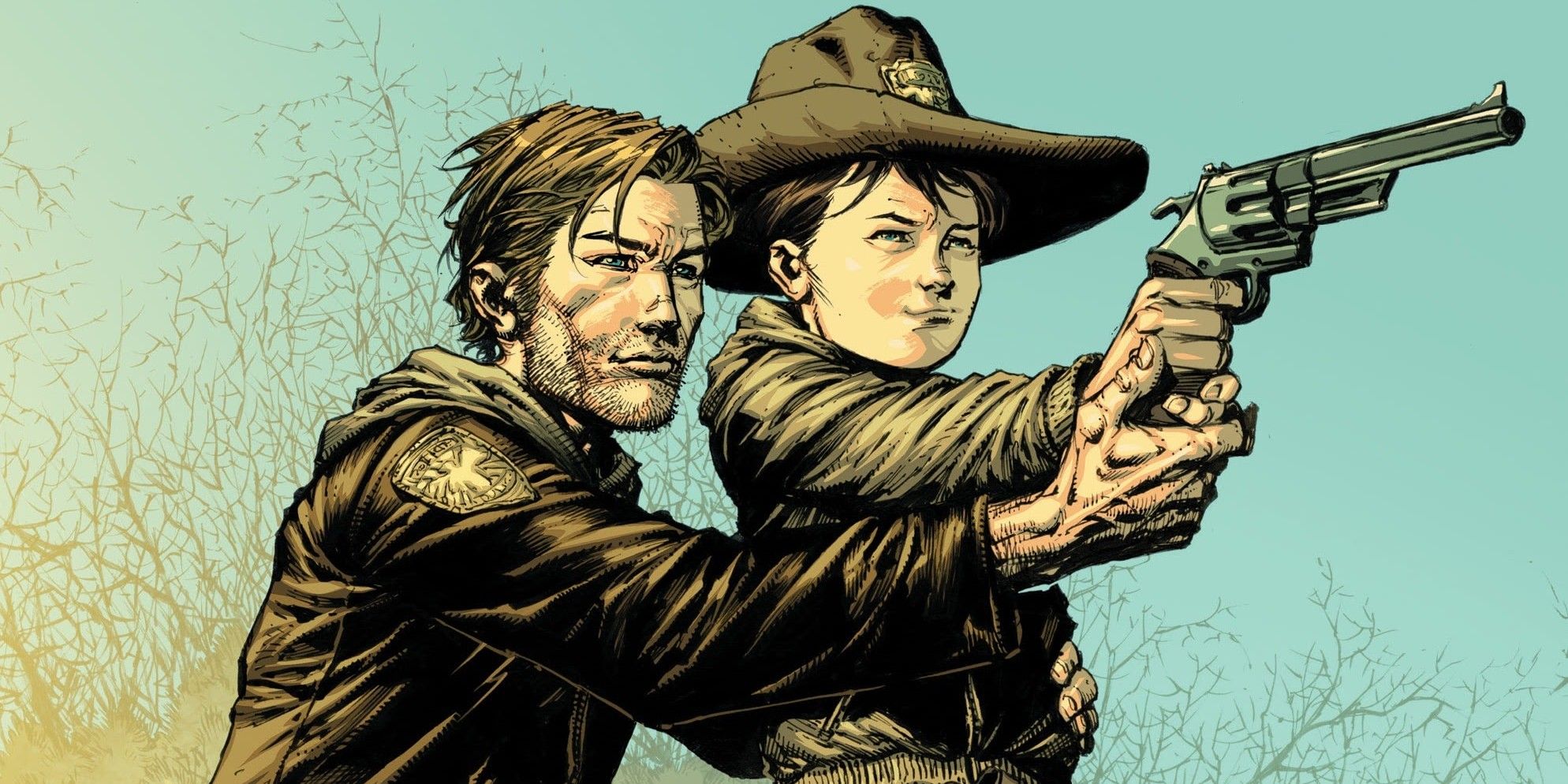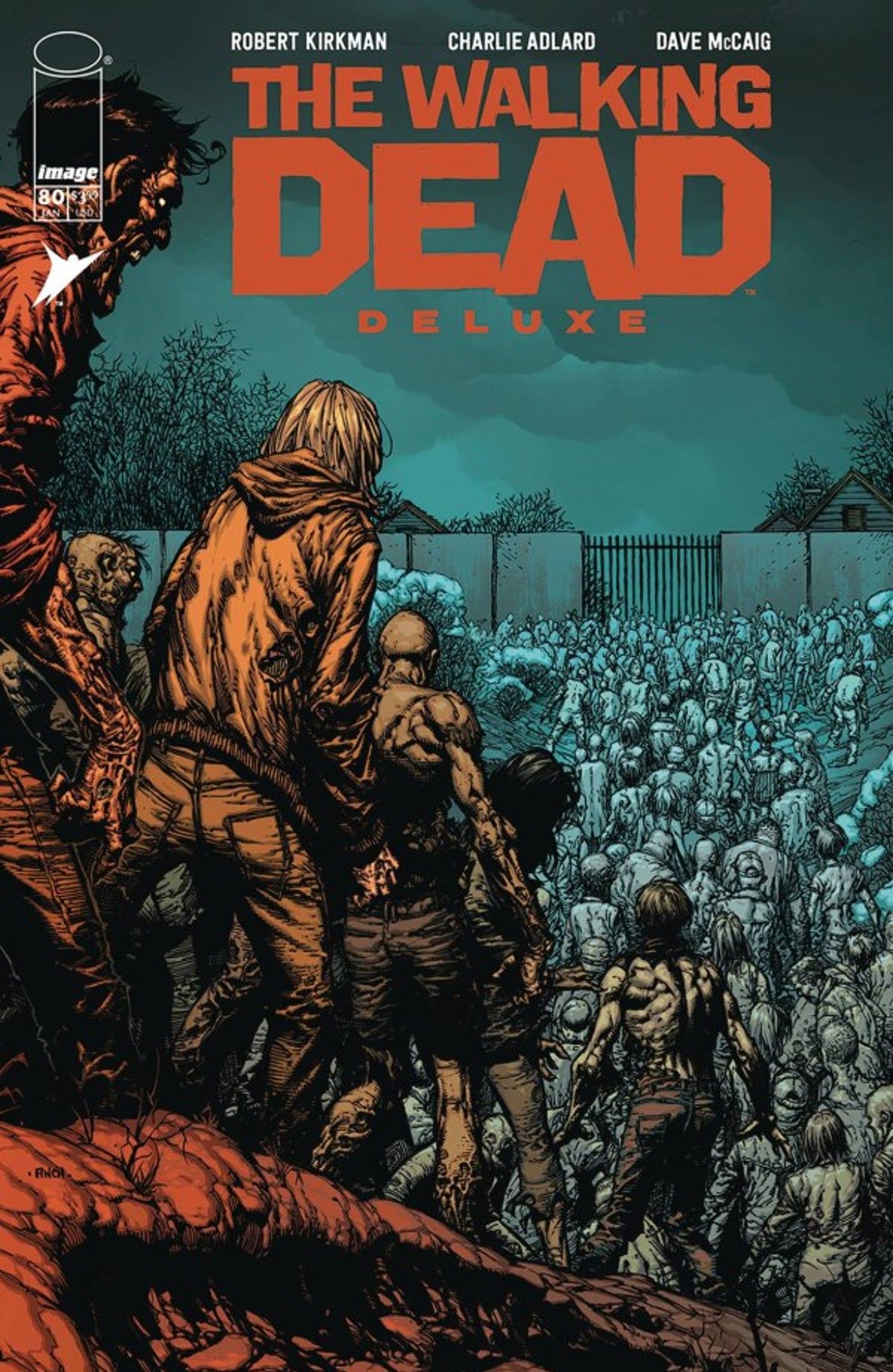
The Walking Dead creator Robert Kirkman admitted that there is one storytelling technique he feels he didn’t execute to its fullest potential during his time writing the series, saying that he is “at times, embarrassed,” over how the series followed up on its many issue-ending cliffhangers. According to the author, while his cliffhangers were often effective, the follow-ups could often be considered lacking.
The Walking Dead Deluxe #89 – a full color reprint of the original black-and-white comic – contains Robert Kirkman’s notes on the issue, dissecting his own creative decisions, and offering insights into how the story evolved. In this case, Kirkman notes that he’s pleased with the opening’s follow-through on issue #88’s cliffhanger, something that hasn’t always been the case with the series.
As the Deluxe reissue of the series has progressed, Kirkman’s postmortem on his own work has been among the most exciting aspects of each release, offering as much fresh context for the story as the colorization of the art.
Robert Kirkman Calls Himself Out For Undermining Too Many Cliffhangers
The Walking Dead Deluxe #89 – Written By Robert Kirkman; Art By Charlie Adlard; Color By Dave McCraig; Lettering By Rus Wooten

Kirkman’s ongoing discourse on his own use of cliffhangers is a valuable look into the creative process, one that can inform fans’ understanding of the series.
Throughout his reflections on the series that have accompanied each of the full-color Deluxe releases, The Walking Dead creator Robert Kirkman has, in a way, unburdened himself, letting slip many of the secrets that the creator of an ongoing serial narrative must hold onto for years. Though only several years removed from the end of the comic’s run, it has been long enough since the series debuted that Kirkman has been able to look back at his work from the beginning as a mature artist, offering frank analysis on his younger self’s work.
The annotations for each Deluxe issue offer a host of valuable insights into everything from Kirkman’s writing process, to discarded ideas for the series, to things he’d do differently if he could. His critique in The Walking Dead Deluxe #89 centers on his follow-through on cliffhangers. Kirkman writes:
As I was saying last issue, Nicholas really could have delivered a stronger line to punch up that cliffhanger moment. Well, page one of this issue delivered just that. “We kill Rick before he kills us.” Boom. THAT would have made a good ending moment.
This page 1 is delightful to me. I am, at times, embarrassed going over this series again as I see how often a cliffhanger at the end of an issue is deflated or subverted on page 1 of the following issue. Well it’s great to finally find an example where the moment is doubled-down in the following issue, reinforced, and heightened. Very cool.
Kirkman’s comments are interesting, because for readers, cliffhangers became a familiar part of the rhythm of The Walking Dead comic series. As a result, a closer examination of the author’s use of this technique offers a new way to look at the series for longtime fans.
It’s noteworthy that Kirkman’s comments in The Walking Dead Deluxe #89 follow thoughts he shared on the ending of the previous issue, which he cited as not maximizing the potential of its cliffhanger. Though it may only be coming in bits and pieces, Kirkman’s ongoing discourse on his own use of cliffhangers is a valuable look into the creative process, one that can inform fans’ understanding of the series, and provide guidance to the next generation of ambitious creators following in the author’s footsteps.
Cliffhangers Were An Essential Part Of Reading The Walking Dead
A Deeper Look At Author Robert Kirkman’s Self-Criticism

” Deflation ” of readers’ expectations after a cliffhanger is not what any creator wants to do –but ” subversion ” is a different story…As the series continued, readers recognized Kirkman’s tendency to subvert cliffhangers, and in response, that became another expectation for The Walking Dead.
Whether it is a weekly TV series, or a monthly comic book, the experience of following a serial narrative differs significantly from consuming a complete story. With The Walking Dead, Robert Kirkman tried to make the most of the medium’s serial nature, particularly with the way he crafted the endings of individual issues. Cliffhangers quickly became essential to the series’ flow; though, as the writer has come to believe in retrospect, he didn’t necessarily always make the most of these moments, especially in the way he followed them up.
Taking a closer look at Kirkman’s comments, he describes his tendency to both “deflate” and “subvert” cliffhanger endings quickly in the next issue. It can be argued that only one of these things is a creative mistake. “Deflation” of readers’ expectations after a cliffhanger is not what any creator wants to do – but “subversion” is a different story. In effect, as the series continued, readers recognized Kirkman’s tendency to subvert cliffhangers, and in response, that became another expectation for The Walking Dead, for better or worse.
As a part of The Walking Dead’s reading experience, those subversions were not all bad, but their author’s dissatisfaction with them does suggest a disconnect between their intended narrative function, and their ultimate impact on the audience. As for cases where Kirkman deflated, or undermined his endings, the effect is mitigated now by the completion of the story. Still, it will be an exciting thing to be aware of, for readers who followed the series during its original run, and subsequently revisit the comics in the future.
Walking Dead Deluxe’s Behind-The-Scenes Insights Are As Exciting As Its Art
Kirkman’s Annotations Are Invaluable

The colorization of The Walking Dead’s art offers a different experience when it comes to the visual dimension of the book, while Kirkman’s annotations give readers a deeper understanding – and often a heightened appreciation – of the story.
Readers and critics alike will spend years discussing Robert Kirkman’s analysis of his writing process, and the resulting successes and failures, in The Walking Dead Deluxe – and hopefully, future issues will contain further elaborations on his use of cliffhangers. The first, most evident joy of the Delux re-release, naturally, has been how different the comic feels with its stark black-and-white art filled in with vivid color. With half of the series colorized at this point, however, Kirkman’s annotations have come to be the most exciting part of each issue.
The colorization of The Walking Dead’s art offers a different experience when it comes to the visual dimension of the book, while Kirkman’s annotations give readers a deeper understanding – and often a heightened appreciation – of the story. Not just the plot details, but its themes, and its ambitions, and occasionally, its failures. This is incredibly meaningful to fans of the franchise, as well as immensely invaluable to future creators, and future scholars who will seek to understand The Walking Dead for its cultural importance.
Just as readers waited month-after-month to discover how Robert Kirkman would pay off the latest Walking Dead cliffhanger, he has once again hooked readers into returning to the Deluxe reissue with similar anticipation. Though the stakes may not be as high, readers are happy to invest in understanding their favorite stories more clearly, and that is what The Walking Dead Deluxe has to offer in multiple ways. Kirkman’s continuing exploration of The Walking Dead will only grow more fascinating as it enters the back half of the series’ run.





